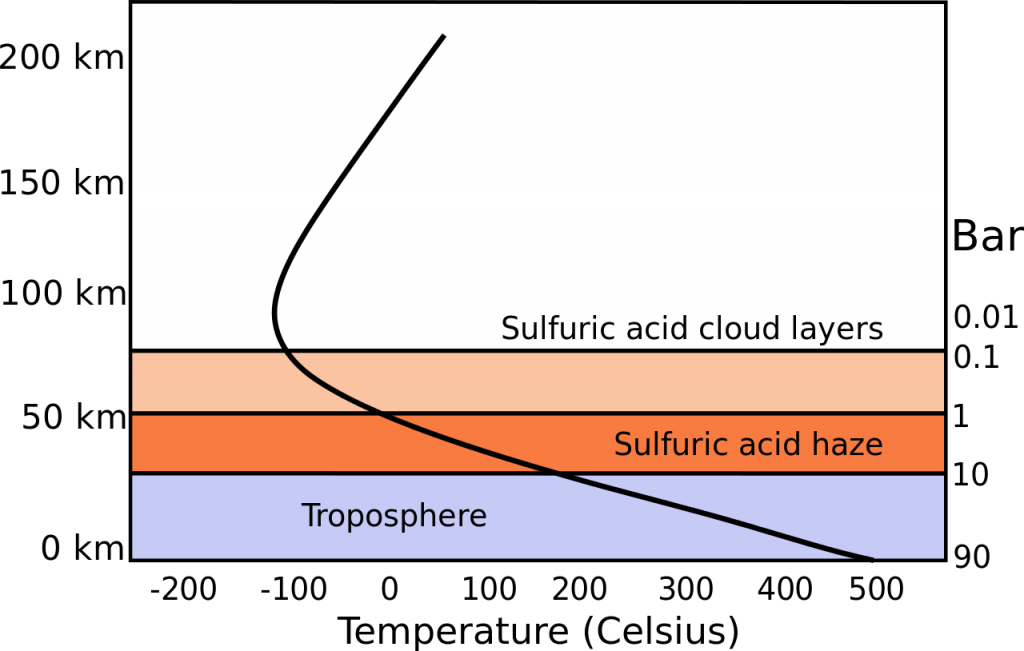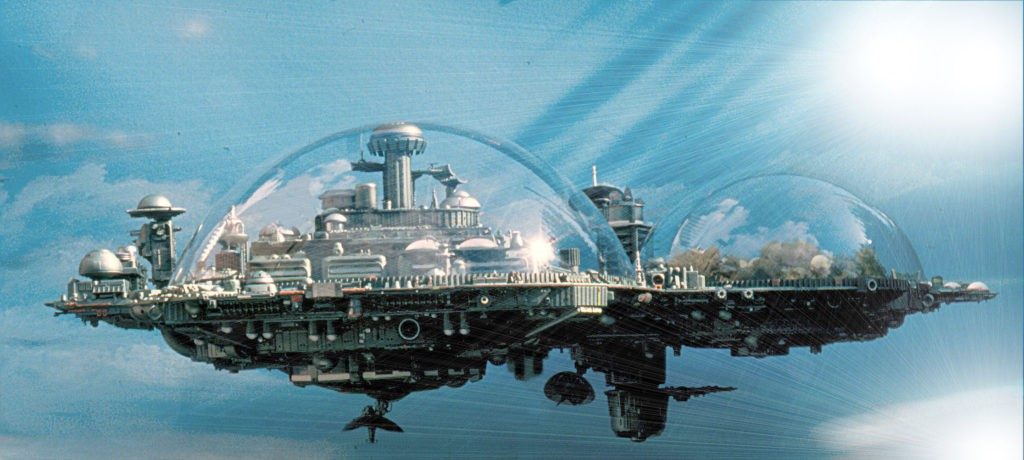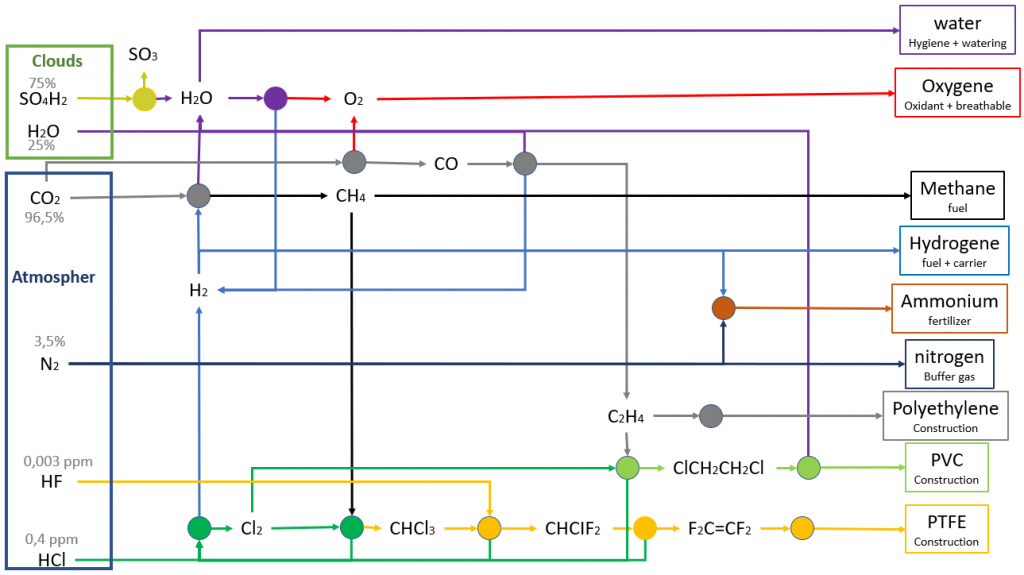So at first glance, Venus passes for hell with the worst conditions of the solar system but in the zone of clouds (40 to 60 km altitude) is an oasis that probably gathers the conditions closest to the Earth. The first hospital feature is the atmospheric conditions, between 50 and 60km above sea level, the temperature varies from 75 to -10°C and the atmospheric pressure is between 1 and 0.23 bar. So at 55km, the conditions are very close to the warmer Andean highlands, which means that a life form adapted to terrestrial conditions could live without pressurized enclosure or thermal protection, unlike other bodies in the solar system.

The CO2 atmosphere does not allow conventional respiration and extremely corrosive sulphuric acid clouds would destroy most organic molecules. However, these two components can prove to be a resource because CO2 and sulphuric acid can be extracted, which can also provide water essential to the creation of life support. In addition, nitrogen from the atmosphere can act as the main gas to create a breathable mix with oxygen as on Earth. The air, thus also creates the property of being carrying in the atmosphere of Venus (because lighter than CO2) and thus allows to live inside even huge balloons. The presence of a dense atmosphere also offers anti-radiation protection because even in the absence of magnetic fields, the mass of CO2 above makes an effective anti-radiation barrier (higher than that of the Earth’s surface) against solar and cosmic radiation.
Unlike a space, lunar or Martian module that will be real small bunkers, the walls of a Venusian base would have no role of thermal insulation, that of protection against radiation and would suffer a very small difference in pressure. The main role of the walls is to create a watertight barrier and therefore they must be light and transparent provided they resist the acid cloud that offers a magnificent spectacle.

The wind speed of 350km/h may seem prohibitive, but in the absence of fixed points, the base would be moving with the atmosphere at 350km/h creating a day/night cycle for 4 earth days compared to 117 on the ground. This speed is the maximum speed reached at 60km altitude, it decreases at lower altitudes. This allows the speed of the floating station to vary without propulsion but by playing on the altitude to allow an appointment between several elements.
In addition to this movement to the west, always playing on the altitude it is possible to choose a move to the north or south. Indeed, with Hadley’s cell from each hemisphere, the wind in the lower part of the cloud zone, is heading towards the equator while at the top the wind is towards the pole. Thus a main base may be in the lower zone of the atmosphere to remain stable on the equator, while an exploration vehicle takes altitude to choose its latitude and study the area and then descends to return to the base on the equator.
In addition to these generally known horizontal movements, the study of vertical movements that can cause turbulence is very limited because orbiters have difficulty detecting vertical movements of less than 10m/s (36 km/h). The most accurate data are those carried out by the two balloons of the Soviet Vega missions, which have accumulated 100 hours of recording, identifying vertical movements of up to 3m/s but causing no acceleration of more than 1% of Earth’s gravity, thus causing little or no effect on the life of the occupants of a floating base.

Unlike a Martian colony (with low solar power that can be interrupted by storms) the energy supply is not a problem on Venus. The solar power received at an altitude of 50 km is 50% greater than that received on the Earth’s surface by good weather. Moreover on Venus, with the reflectivity of the clouds, the light comes from everywhere and a photovoltaic panel would produce electricity regardless of orientation and would continue to be illuminated even a little while after sunset or before sunrise.
For periods of darkness that can last 50 hours, it is either possible to use an energy storage system or recover wind or aerothermia. Since the balloon moves with the surrounding air mass, placing a wind turbine in it would be of no interest, however if a wind turbine or traction sail is at a different altitude from the balloon to which it is attached, the difference in speed creates a difference in strength that can generate energy. Also playing on altitude, it is possible to use the upper temperature in the lower layers of the atmosphere to extract energy in the manner of what is done on Earth by geothermal.
With this energy, it is possible to make the production of all the essential element for a base. With water (from sulphuric acid) and CO2, hydrogen, oxygen and liquid methane can be produced for engines for return to Earth. It is also possible to produce plastic elements such as polyethylene or PVC to make various structures or objects. In addition, hydrogen fluoride produces the PTFE essential to protect balloons and modules from clouds of sulphuric acid. By drawing metal and ceramic elements from the surface, it is possible to build metal parts and electronic elements. In addition, advances in carbon fibers and nanotubes as well as organic electronics make it possible to imagine in the future the production in situ of highly efficient structural elements or electronic elements or even solar panels.
